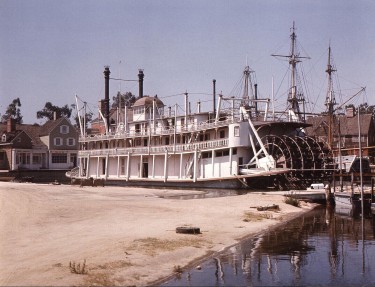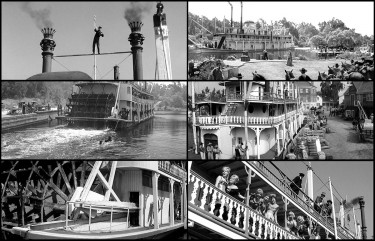For some reason I remember this as a child from long ago and remember it having good studio sets with trees and the Cabin and a lot of foliage but this was obviously studio bound. In those days it was not possible to transmit from outside the studios and any such action had to be filmed and slotted into the ‘live’ programme. It seems that Ewen Solon played Mul keep mo which is a name that I have remembered and even used from time to time over the years – although it is difficult to think of such a name being slotted into a conversation I must say. Anyway I came across this summary of the actual play and storyline as follows :-
The Cabin in the Clearing’ (1954)
Besieged in their log cabin by Shawnee Indians, Silas Sutherland, his wife Polly, and his daughter Alice, are cut off from all help. Their negro servant Scipio is captured, whilst out looking for an escaped cow, by the Indians who had already found and eaten the cow, and held prisoner in the forest outside, though lurking nearby are Mul-keep-mo, a friendly Miami Indian and young Brayton Ripley, a white scout. Scipio escapes by clubbing his guard with the cow’s skull and then joins Brayton Ripley. But the Indians have kindled a fire under the wall of the cabin . . .
There was a love interest between Brayton and Alice Sutherland. Brayton was “blood brother” to Mul-keep-mo, each saving the other’s life. There were tomahawk fights between the Indians. The Sutherland women attempted to escape by waggon but were themselves captured, but saved by the men.
A television play in 5 episodes. Adapted by Felix Felton and Susan Ashman from the novel by E.S. Ellis. Produced by Rex Tucker and directed by Patrick Dowling.
Cast: Silas Sutherland – Shaun Sutton; Polly his wife – Peggy Mount; Alice, his daughter – Ann Hanslip; Scipio – Charles Swain; Brayton Ripley – Derek Aylward; Mul-keep-mo – Ewen Solon; Haw-bu-da – Carl Duering; The Owl – Shaw Taylor; Shawnee Indians – Saul David, John Hoskin.
Settings by Richard Henry.
The incidental music was Dvorak’s New World Symphony
1—’Friends and Foes’
‘The Redskins had dug up the hatchet-the Miami and Shawnee tribes were attacking the white settlers, and we in our lonely cabin were in deadly peril….’
2—’Besieged’
Besieged n their log cabin in the Ohio wilderness, with Chief Haw-hu-da and his Shawnee Indians on the warpath outside, Silas Sutherland and his wife and daughter have no choice but to fight on in the hope that help will come from the blockhouse fifty miles away. But outside in the forest, unknown to the Indians, are Brayton Ripley-a young woodsman friend of the family-and Mul-keep-mo, a Miami Indian, whose life Ripley had saved.
3—’Ordeal by Fire’
Besieged in their log cabin by Shawnee Indians Silas Sutherland, his wife Polly, and his daughter Alice, are cut off from all help. Their servant Scipio is held prisoner in the forest outside, though lurking nearby are Mul-keep-mo, a friendly Miami Indian, and young Brayton Ripley, a white scout. But the Indians have kindled a fire under the wall of the cabin…..
4—’A Desperate Plan’
5—’The Break-Out’
The BBC screened another production of the play in 1958.




